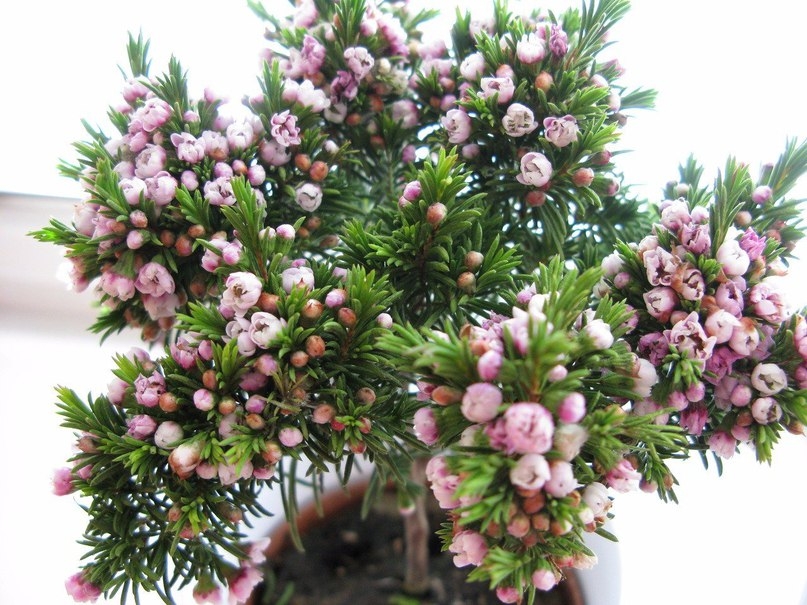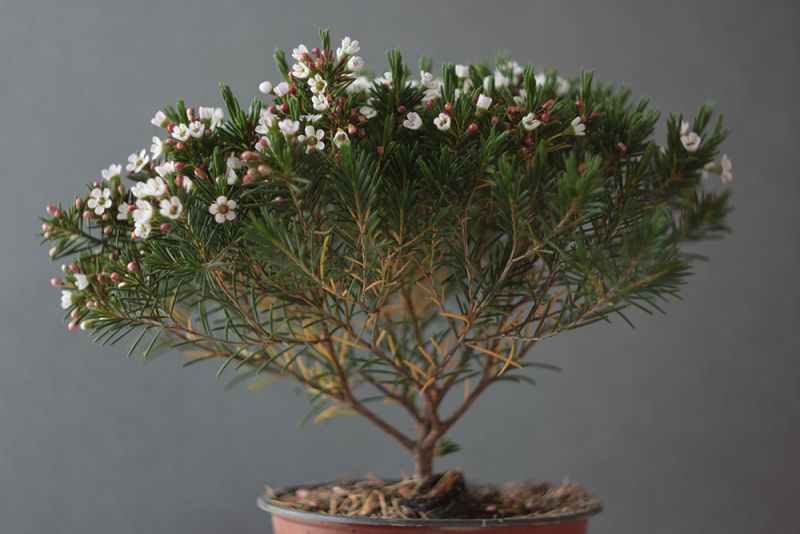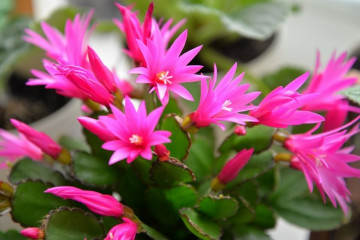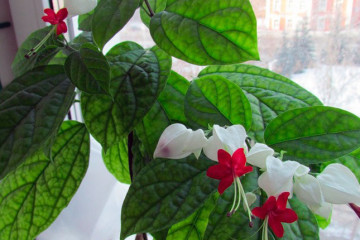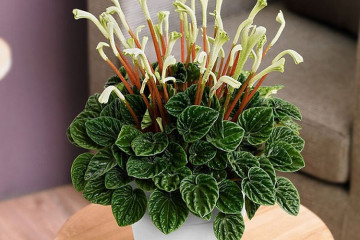Hamelacium - home care and flowering
Content:
Chamelacium is a plant of the myrtle family. Its close relatives are the tea tree, feijoa, and the clove tree. The plant looks bright and impressive, is widely used in floristry, suitable for home breeding.
Origin and appearance
Chamelacium wax myrtle (chamelaucium uncinatum) is a plant native to Australia. It is an evergreen tree or bush. The height of different species ranges from 30 cm to 3 m. The leaves are thin and long, dark green in color, similar to needles. They are covered with a thin waxy film, for which the plant received its second name, wax myrtle.
Outside of the flowering period, the white chamelacium bush can be mistaken for a small Christmas tree. But when it blooms, the branches are covered with many small but fragrant flowers, most often white, red, pinkish or purple.
Hamelacium is widely used in floristry. Any bride will be delighted with a bouquet decorated with these delicate flowers. A cut branch of myrtle is able to maintain freshness and delight the eye for up to 10 days.
The flowers and leaves of wax myrtle contain a large amount of essential oils. The leaves and fruits of this plant are harvested by cutting and drying. Decoctions and infusions are then used in folk medicine to treat colds. Essential oil is used in aromatherapy, for inhalation, as a sedative.
In total, there are 14 main species and several hybrids. Some of them are listed below:
- Snowflake is a short bush with white or pinkish flowers;
- White - the leaves of this species are slightly longer than those of their counterparts, and the white flowers resemble a bell shape;
- Hooky is a voluminous fast-growing plant. In the wild, the height of this bush can exceed two and a half meters. This species is also sometimes called the heraldon. The flower owes this name to the city where it originated;
- Hamelacyum Strawberry;
- Hamelacy Sarah Delight;
- Hamelaceum of the Ophir species.
Transfer after purchase
Care should be taken when choosing a plant. The bush should look healthy. The leaves should be free of stains or plaque, and the buds should not be wrinkled. After purchase, you need to choose a place in the house for a new pet, prepare a suitable pot and soil for it.
The place where this flower will stand should be well ventilated to prevent overheating of the crown, but strong drafts should be avoided. Hamelacium is not afraid of dry air, it can be safely placed in rooms with central heating. On the contrary, excess moisture contributes to the development of shoot diseases.
The soil is composed so that it is light, loose, air and moisture permeable. The optimal mixture contains the following components:
- peat;
- coarse sand;
- the land is soddy and leafy;
- humus;
- sphagnum.
Choosing the right pot is important
It is generally recommended to choose a vessel that is about 3 cm larger than the previous one. Make sure there are drainage holes at the bottom.
The day before the transplant, the chamelacium is placed in a plastic bag and rearranged in a cool place with good lighting. The transplant begins with the extraction of an earthen coma. To do this, the pot is placed on a flat hard surface, lightly knocking on the walls, holding a knife along the inner edge to peel off the ground. If necessary, the old pot can be smashed gently.
A layer of drainage and some new soil is poured onto the bottom of the new pot. The earthen lump of the plant is cleaned of old adhered drainage, the top layer of soil is carefully removed and the lump is placed in a new pot. The gaps between the earthen lump and the walls of the pot are covered with new earth. After transplanting, the chamelacium is left in a greenhouse for another 3-4 days, gradually opening the package.
Reproduction
In most cases, chamelacium is propagated vegetatively. Cuttings do not root very well, so it is better to prepare them with a margin. Often, the workpiece is combined with the pruning of the plant. Cuttings can be rooted both in water and immediately in the soil. The seedlings are placed in a bright, warm room. Recommended temperature 22-25 ° C. Rooting usually takes 3 weeks to 2 months.
Chamelacium can be propagated using its seeds, but it is difficult to achieve a good result with this method. The seeds of the plant have a low germination capacity, the sprouts that appear do not take root well, and the properties of the hybrids may not be transmitted to the descendants at all. For these reasons, seed propagation of chamelacium is not popular.
Care
If you are new to plant breeding and have purchased a chamelacium, taking care of it at home can be tricky. This plant is capricious, sensitive to changes, in the wrong conditions, sheds foliage or refuses to bloom. It will take some experience in floriculture to achieve good growth and abundant flowering from the wax myrtle.
Watering
Watering the chamelacium should be given special attention. In the warm season, water should be plentiful, but in no case should the liquid stagnate. Excess moisture can lead to putrefactive root diseases. The flower is more resistant to drought, but severe drying out can also damage its root system.
In winter, watering is reduced. Good to know: you can slightly acidify the water for irrigating chamelacium by adding a little vinegar or lemon juice. This will have a beneficial effect on the condition of the plant.
Top dressing
In the wild, chamelacium grows in areas with poor, infertile soil, which means that at home it also does not require abundant feeding. Conversely, overly fertile soil and fertilizers containing phosphorus can adversely affect plant health. It is enough to feed the bush once a month during the flowering period using universal fertilizers diluted 2-3 times stronger than the recommended one.
Pruning
After flowering, the bush is recommended to be cut to maintain the beautiful shape of the plant and the density of its crown. Old buds are removed, the branches are cut to about a third of the length. Chamelacium can have a standard appearance, i.e. look like a small tree.
To stimulate the emergence of new shoots and make it more bushy, pruning and pinching of the shoots are also used. Chamelacium tolerates pruning well and quickly restores its original volume.
Preparing for winter
In autumn, the plant is transferred to a cooler room with a temperature of about 15 ° C. The plant enters a dormant period in order to gain strength and bloom next year: watering should become more rare and less abundant, feeding is no longer required.
Hamelacium is a delicate plant that requires careful and attentive care from an experienced grower. However, if you take care of it correctly, it will delight its owners with a magnificent appearance, beautiful long flowering and an unforgettable aroma.



